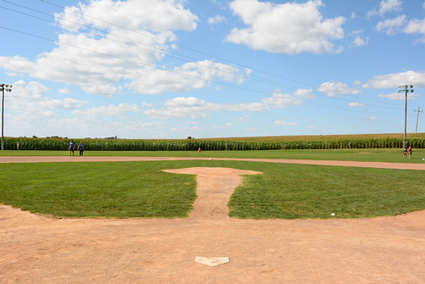“If you build it, he will come.”
Most of us recognize this line from the movie “Field of Dreams,” but it’s not reality, especially in the world of government programs.
Over more than two decades working in policy research, I have studied dozens of programs that were created to help people improve their lives and circumstances. But many of these initiatives struggle because their designs do not fully reflect the day-to-day realities of the people they are trying to serve. Why, for instance, would people not sign up for job training? Or miss deadlines to apply for financial assistance? Or fail to obtain health insurance for their children? If these programs exist, why do so many who can benefit from them not use them or start but drop off along the way?

Real People, Not Vulcans
Thinking about these questions led me to focus more deeply on behavioral science and the ways in which it can help public programs operate more effectively. The fundamental insight from behavioral science is that none of us is “perfectly rational.” Instead of fully considering every option under the sun and perfectly following through on the choices and actions that will benefit us most, in reality we procrastinate, take mental shortcuts, get overwhelmed by stress or too many choices, care about the opinions of others, and the list goes on and on. And these idiosyncrasies influence our choices and actions in fairly predictable ways. For example, if we are stressed or worried, we are more likely to forget important appointments or struggle completing tasks that require attention and concentration. Armed with this knowledge, we can design our social policies and programs for real people and not Vulcans.
Applying behavioral insights can help researchers and policymakers work together to better understand the stresses, concerns, and day-to-day challenges of the people who can benefit from government interventions and use this knowledge to improve program design and implementation. This can involve developing so-called “nudges”—small changes to existing programs to address important challenges—or designing new policies or programs from the ground up. Taking this approach, nevertheless, requires pausing along the way to ask these types of questions:
- What are the needs and wants of the people we intend to serve?
- Why might this program fail even if it does address what they need and want?
- Where might these people fall off the path to success? And why?
- How can we better support or motivate them along the way to become more successful?
Exciting Developments
The adoption of behavioral insights in policy research and program design is one of the most exciting and promising developments in the field today. At Mathematica, for example, my colleagues and I have worked with federal and state agencies on projects that apply behavioral insights across a wide range of policy areas, including employment, marriage and relationship education, school choice, opioid medication prescribing, family support, and maternal and child health. (I talk in more detail about this work on our Policy in Perspective podcast.)
Earlier this month, I attended the annual fall conference of the Association for Public Policy Analysis and Management and was struck by how behavioral science was deeply integrated into the work of colleagues across the policy research field. The conference included more than 30 sessions, roundtables, and papers that focused directly on applications of behavioral insights or featured some discussion of the topic—on subjects as diverse as early childhood and postsecondary education, student loans, family support, savings, conservation, and the future of “nudging” in policymaking.
Policymakers at the highest level also recognize the potential of behavioral insights. In 2015, President Obama established the White House Social and Behavioral Sciences Team to help federal agencies apply behavioral insights to make their programs more user-friendly and more effective. The team recently issued its second annual report, with examples of behavioral interventions that help people in need take fuller advantage of services and supports that can make a real difference in their lives. The report shows the breadth of areas in which behavioral insights are applicable and illustrates how relatively modest changes in program design and implementation can have significant impact.
I am eager to see the relationship between behavioral science and public policy grow stronger in the coming years, as those in charge of creating and running programs for the public good learn more about the best ways to engage and serve the people who will benefit from their services. The landscape of public programs will never be a “Field of Dreams,” but we can build it in ways that help create brighter futures for people in need.


